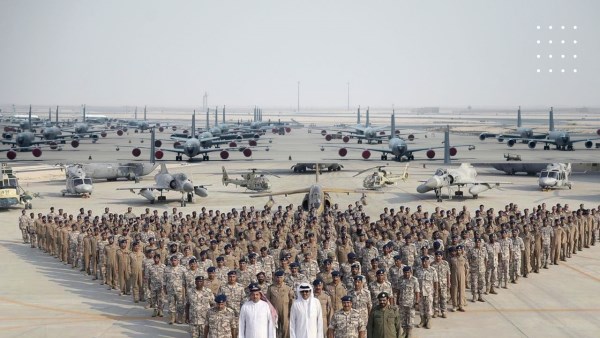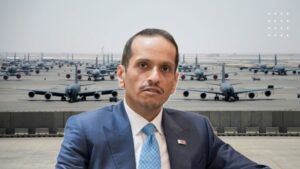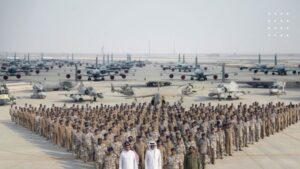Al-Udeid Air Base: A Strategic Hub in the Middle East

Located just 30 kilometers southwest of Qatar’s capital, Doha, Al-Udeid Air Base is one of the most important military installations in the Middle East. It serves as a key hub for U.S. and allied military operations, offering a strategic position for operations in the Persian Gulf region. Over the years, Al-Udeid has grown in significance, becoming a crucial facility for coordinating air operations in areas like Iraq, Afghanistan, Syria, and across the broader Middle East.
Origins of Al-Udeid Air Base
The base was initially developed by Qatar in the 1990s. At the time, the Gulf nation sought to strengthen its military ties with Western powers, particularly the United States, as a way to enhance its security in a volatile region. The U.S. became increasingly interested in Qatar as a strategic location after the 1991 Gulf War, during which the importance of forward-operating bases became clear. Al-Udeid’s construction began in earnest in 1996, with significant investments from Qatar to make the base a modern, fully functional military facility.
The United States Air Force (USAF) moved into Al-Udeid in 2001, shortly after the 9/11 attacks, when it became evident that the U.S. would require more secure and strategically located bases for its military operations in the Middle East, particularly during the wars in Afghanistan and Iraq. The base quickly became the primary U.S. air operations center in the region.
Strategic Importance
Al-Udeid’s location gives it enormous strategic value. It is located in the heart of the Persian Gulf, a region that is both an economic and geopolitical hotspot due to its vast energy resources and ongoing security challenges. From this central point, the U.S. and its allies can project power across the Middle East, Central Asia, and parts of Africa, providing crucial logistical and operational support for military efforts in the region.
Key roles and operations of Al-Udeid Air Base
Air Combat and Logistics:
Al-Udeid houses the U.S. Central Command (CENTCOM) and U.S. Air Forces Central Command (AFCENT) forward headquarters, which coordinate all air operations in the region. This includes air strikes, surveillance missions, refueling operations, and logistical support for coalition forces in conflicts such as those in Afghanistan, Iraq, and Syria.
Command and Control:
The base serves as the Combined Air Operations Center (CAOC), from which U.S. and allied forces manage air campaigns and monitor 24/7 air operations across the Middle East. The CAOC is responsible for tracking all airborne assets, ensuring mission coordination, and guiding aerial strategies in conflict zones.
Refueling Hub:
One of the key features of Al-Udeid is its role as a refueling hub. Aircraft like the KC-135 Stratotanker and KC-10 Extender are stationed here to conduct mid-air refueling operations, extending the reach of fighter jets, bombers, and reconnaissance aircraft. This capability is essential for long-duration missions over the region.
Intelligence, Surveillance, and Reconnaissance (ISR):
The base supports a wide array of ISR activities, including unmanned aerial vehicles (UAVs) like MQ-9 Reaper drones, which conduct reconnaissance missions over conflict areas, gathering crucial intelligence for ground operations.
Logistics and Support:
Al-Udeid is not just a combat base; it also provides extensive logistical and support services for the U.S. and coalition forces. It is a major hub for transporting troops, equipment, and supplies into and out of the region, making it an indispensable part of military operations.
Modern Infrastructure and Capabilities
Al-Udeid is one of the largest and most well-equipped air bases in the region, boasting modern infrastructure to support a wide range of military operations. The base includes a 12,500-foot runway, capable of handling heavy bombers and transport aircraft like the B-52 Stratofortress and C-17 Globemaster III. Additionally, the base has advanced facilities for housing and maintaining aircraft, including hardened shelters to protect valuable assets from potential attacks.
Qatar has invested heavily in the base’s infrastructure, expanding facilities to accommodate thousands of U.S. and allied personnel. Al-Udeid can house more than 10,000 military personnel at its peak capacity, and it includes everything from living quarters to recreational amenities for stationed troops.
In recent years, the base has also seen upgrades to its air traffic control systems, fueling capabilities, and communications infrastructure, making it one of the most advanced military installations in the region.
Qatar’s Role and Relationship with the U.S.
While Al-Udeid is largely operated by U.S. forces, it remains technically under the jurisdiction of the Qatari government. The base has been a cornerstone of the close military relationship between Qatar and the U.S. Qatar’s leadership has positioned the base as a key component of its national security strategy, helping to deter potential threats from regional powers, such as Iran, and maintaining the security of its vast energy resources.
The presence of U.S. forces in Qatar has also acted as a stabilizing force in the broader Middle East. Despite regional tensions—especially Qatar’s diplomatic rifts with neighboring Gulf states—Qatar’s hosting of the U.S. military at Al-Udeid has underscored its strategic alliance with the West.
Over the years, Qatar has used its role as host to strengthen its ties with Washington, facilitating deeper economic and political partnerships. The base’s strategic importance has become even more pronounced in the face of increased instability in the region, including the rise of groups like ISIS and ongoing tensions between the U.S. and Iran.
Controversies and Challenges
While Al-Udeid plays a vital role in U.S. military operations, it has not been without controversy. One significant issue is the cost of maintaining the base and the extensive U.S. military presence in the region. Critics argue that the U.S. investment in military infrastructure in the Middle East, including Al-Udeid, diverts resources from other priorities and entangles the U.S. in prolonged conflicts in the region.
Moreover, Qatar’s diplomatic challenges with its neighbors—particularly the Saudi-led blockade against Qatar that began in 2017—have raised concerns about the political stability of the region. The blockade, which saw Saudi Arabia, the United Arab Emirates (UAE), Bahrain, and Egypt cut ties with Qatar, put additional pressure on the U.S. to navigate the delicate political landscape of its Gulf allies.
Despite these challenges, Al-Udeid has continued to operate as the central hub for U.S. military activities in the region, with no significant interruptions to its mission.
The Future of Al-Udeid Air Base
Looking ahead, the future of Al-Udeid is likely to remain central to U.S. defense strategy in the Middle East, though its role may evolve as geopolitical dynamics shift. In recent years, there has been growing interest in reducing the U.S. military footprint in the Middle East, with policymakers debating the long-term presence of American forces in the region.
At the same time, rising tensions with Iran and continued instability in Syria, Iraq, and Afghanistan make it clear that Al-Udeid will remain crucial for monitoring and responding to threats. The base’s role as a forward-operating location for air operations will likely remain a key part of U.S. strategy, even if the U.S. eventually reduces its ground forces in the region.
There are also discussions of expanding Al-Udeid’s capabilities further, with both the U.S. and Qatar considering additional investments in the base’s infrastructure to enhance its operational readiness. In 2019, Qatar announced plans to expand the base’s facilities, further demonstrating its commitment to maintaining this strategic partnership.
Conclusion
Al-Udeid Air Base has been a cornerstone of U.S. military operations in the Middle East for over two decades. Its strategic location, advanced infrastructure, and role in supporting air operations make it indispensable to both the U.S. and its allies. While there are ongoing challenges and controversies surrounding the base, its importance in maintaining regional stability and supporting global military efforts cannot be overstated.
As the Middle East continues to face complex security challenges, Al-Udeid will remain a critical asset for projecting power, gathering intelligence, and conducting operations in one of the most volatile regions in the world. Whether through combat operations, logistics, or refueling missions, Al-Udeid Air Base stands as a symbol of enduring military cooperation between Qatar and the United States.






